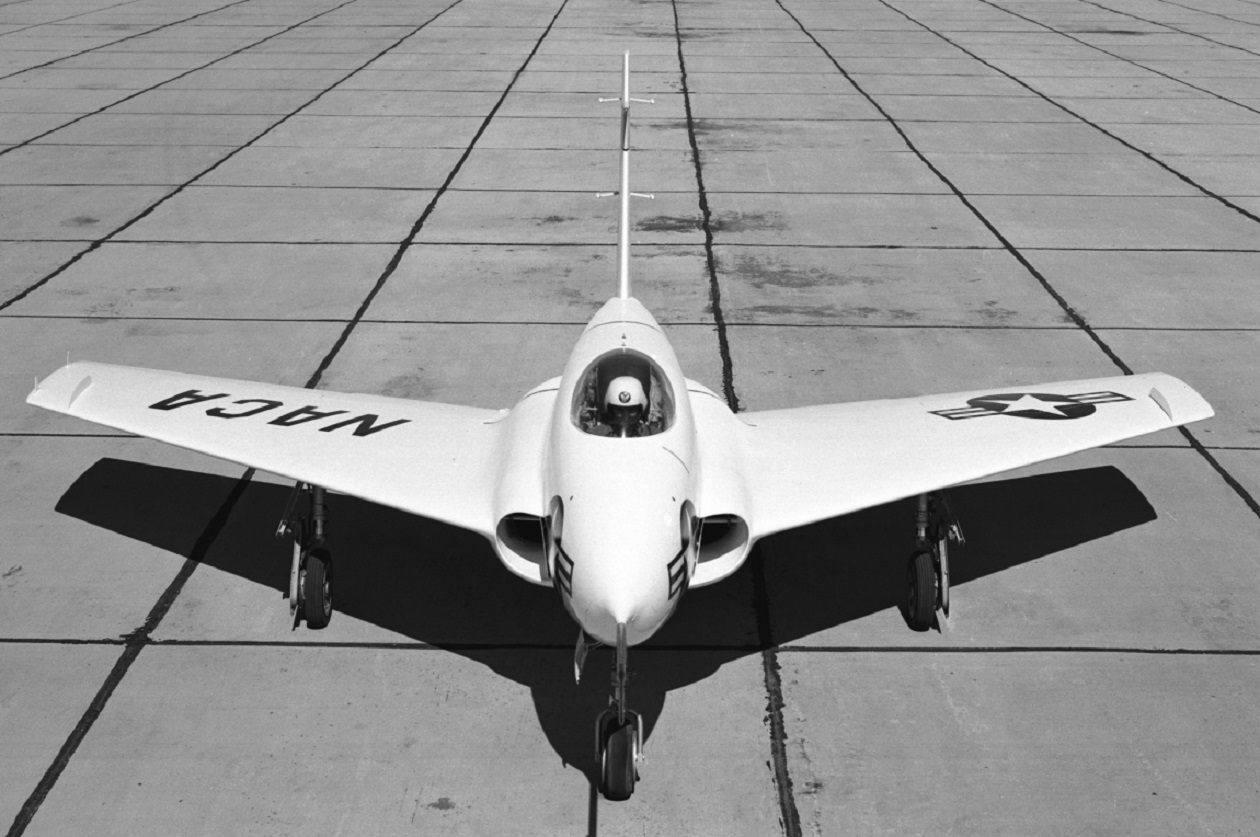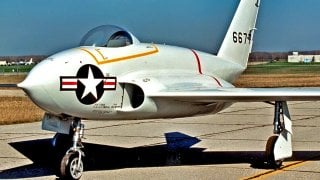X-4: It Might Be the Worst X-Plane Ever to Fly
The Northrop X-4 Bantam, developed in 1948, was an experimental aircraft designed to test flight without horizontal stabilizers.
Summary and Key Points: The Northrop X-4 Bantam, developed in 1948, was an experimental aircraft designed to test flight without horizontal stabilizers.

-Unlike other X-planes aimed at breaking speed or altitude records, the X-4 focused on aerodynamic principles and new flight surfaces.
-Influenced by the German Me163 Komet, the X-4 featured elevons for pitch and roll adjustments.
-Two X-4s were built and tested by NACA, revealing significant stability issues at high speeds, including porpoising, tucking, and inertial coupling.
-The X-4's poor performance ultimately demonstrated that a semi-tailless design was unsuitable for Mach 1 flight speeds.
Northrop X-4 Bantam: The Experimental Jet That Redefined Aerodynamics
Experimental aircraft are generally associated with going faster or higher than any plane before it. The association is merited.
The X-1, piloted by Chuck Yeager, was the first plane to ever break the sound barrier; the X-2 went faster than its predecessor; the X-15 still holds speed and altitude records today, sixty years after it flew.
But sometimes experimental aircraft are developed simply to test new flight surfaces, or to learn more about aerodynamic principles.
The Northrop X-4 Bantam was such an X-plane – developed not to break any speed or altitude records, but rather to gauge the performance of a plane without horizontal stabilizers.
Built to Test Engineering and Design
The X-4 was a prototype twinjet aircraft built in 1948. Only 23 feet long and 14 feet high, the X-4 was quite small – smaller than a Cessna 152. The X-4 could only carry 45 minutes of fuel. And nearly all maintenance work could be performed without a ladder or stool. The plane was so short that you could stand on the ground and look into the cockpit.

Most notably, the X-4 was developed without horizontal stabilizers. Instead, the jet relied on combined elevator and aileron control surfaces called elevons for pitch and roll adjustments. The unique design was incorporated because some aerodynamicists believed that by removing the horizontal stabilizers, a jet traveling at high speed was less likely to experience a shock stall (which can occur when supersonic shock waves from the wings and horizontal stabilizers interact with each other in a way that causes the airplane to stall). The idea, and the corresponding design, were new at the time – but not original; the X-4 featured a layout consistent with the famed Messerschmitt Me163 Komet.
Influenced by German Design
The Me163 was a German interceptor aircraft used by the Nazi power during World War II. To date, the Me163 is the only operational rocket-powered fighter aircraft ever used. When the Komet was introduced, in 1944, its ability to reach 700 miles per hour was unmatched. The rocket-fighter wasn’t particularly effective in its role as an interceptor – and it proved to be a dangerous aircraft to pilot. However, portions of the design lived on, however briefly, in the X-4 program. In light of Operation Paperclip, the top-secret U.S. program to harvest Nazi scientific talent, one wonders whether Nazi scientists contributed to the design of the X-4.
Limited Numbers of the X-4 Were Built
Only two X-4s were ever built. Tested by NACA (which later changed its name to NASA), the X-4 was flown between 1950 and 1953 at what is now Edwards Air Force Base. The first X-4 was rated mechanically unsound and only made ten flights before being scrapped for parts. The second X-4 was more properly constructed, allowing NACA to gauge the aircraft’s performance envelope.
X-4 pilots, which included Scott Crossfield and Chuck Yeager, noted how oddly the aircraft performed concerning pitch. As the X-4 flew faster, the jet began pitching up and down, or “porpoising,” with increasing severity. High speeds also caused the X-4 to “tuck,” or nose-down. Most problematic, the X-4 had a tendency to move around, or “hunt,” on all three axes once speed increased – a harbinger of inertial coupling.
After 81 flights, the X-4 was retired. The jet’s poor performance was valuable in and of itself; the X-4 demonstrated concretely that a swept-wing, semi-tailless design was not going to work for Mach 1 flight speeds.
Sometimes, a wrong answer is as important as the correct answer.
About the Author: Harrison Kass
Harrison Kass is a defense writer with over 1,000 posted articles An attorney, pilot, guitarist, and minor pro hockey player, he joined the US Air Force as a Pilot Trainee but was medically discharged. Harrison has degrees from Lake Forest College, the University of Oregon, and New York University. He lives in Oregon and listens to Dokken. Follow him on Twitter @harrison_kass.


